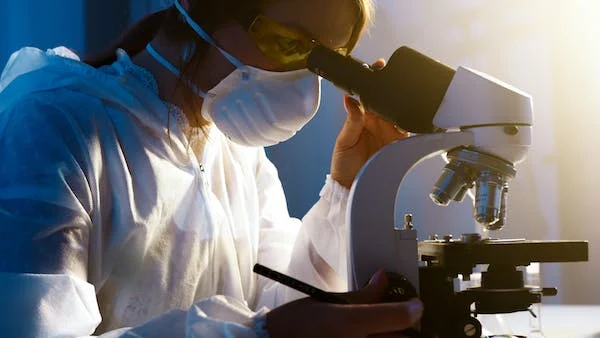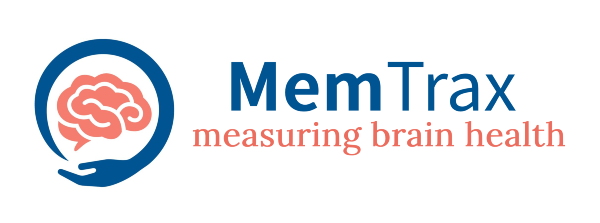Secrets of a Profitable Diagnostic Lab Unveiled

https://images.pexels.com/photos/5726794/pexels-photo-5726794.jpeg?auto=compress&cs=tinysrgb&w=600
Maneuvering a profitable diagnostic lab can be challenging. But it’s not impossible. You just need a steady stream of customers and should provide quality services. With the right strategies and a focus on customer satisfaction, you can build a thriving business in the diagnostic industry.
This article will share some secrets of a profitable diagnostic lab. These secrets
can help you grow your business and increase your revenue. From establishing a robust digital presence to focusing on patient experience, these ideas can help you separate your lab from the industry and build a recurring customer base.
Pathological Equipment Leasing
Blocking your capital by purchasing expensive pathological equipment may be a better decision for your lab business. Instead, consider pathological equipment for lease to generate more profits.
Leasing pathological equipment has several benefits for lab businesses, such as:
- More operating capital: Leasing equipment allows you to use your capital for other business needs instead of tying it up in equipment purchases.
- Improved cash flow: Leasing equipment can provide more predictable and manageable cash flow through fixed monthly payments.
- No effect on credit: Leasing equipment does not affect your credit line, unlike borrowing money to make outright purchases.
- Tax benefits: Leasing equipment can provide tax advantages, such as deducting lease payments as business expenses.
When leasing equipment, refurbished equipment from Excedr can be a lifesaver. This is a cost-effective way to achieve the same quality and performance as new equipment.
The global medical equipment rental market is expected to reach approximately USD 90.66 billion by 2030. This represents a significant increase from the market’s size in 2022 of USD 56.26 billion.
The growth is due to the rising demand for medical equipment and devices, particularly in emerging economies, and the increasing adoption of advanced medical technologies in developed countries.
Leasing pathological equipment can help you keep up with this demand and stay competitive while conserving capital and improving cash flow.
Efficient Use of Technology
Tying up your manpower in diagnostic processes can be time-consuming and costly. However, leveraging technology can significantly increase your lab’s profitability. It reduces operational costs, improves accuracy, and increases efficiency.
Here are some lab technologies to streamline your lab operations and improve profitability:
- Laboratory Information Management System (LIMS): It automates data management, eliminates paperwork, and reduces errors. This saves money and speeds up response times.
- Automated Sample Preparation Systems: These systems automate sample preparation. Hence, it reduces the time and labor required while improving accuracy and precision.
- Liquid Handling Systems: They automate the process of pipetting and dispensing. This enables faster and more accurate sample preparation and testing.
- Robotic Process Automation: It automates repetitive manual tasks, freeing up lab staff to focus on more critical tasks.
The market for lab automation was USD 5.1 billion in 2022. This figure is forecast to surpass USD 7.1 billion in 2028. The following reasons are the significant contributor to such growth:
- Increased demand for accurate and fast diagnostics
- Rising healthcare costs lead to the need for cost-effective solutions
- Technological advancements in the lab automation
Hence, implement lab automation to reduce operational costs, improve accuracy, and increase efficiency. Also, better use of your resources will result in higher productivity. Automation will help you stay competitive and profitable in the market.
Robust Quality Control Measures
Compromising on quality is never an option when running a profitable diagnostic lab. Robust quality control measures are essential to ensure accurate results and customer satisfaction.
Implement strict protocols for sample collection, handling, and testing. This way, you can minimize errors and reduce the risk of misdiagnosis.
Regular equipment maintenance, calibration, and validation are critical to maintaining accuracy and reliability. Additionally, invest in training your staff on quality control processes. This will ensure they follow standard operating procedures.
By prioritizing quality control, you can establish your lab as a trusted provider of accurate and reliable diagnostic services. This will lead to a loyal customer base and increased profitability.
Diversification of Services
Today, patients seek diagnostic labs that offer more than just basic tests. To make your lab profitable, diversifying your services is crucial. By providing a variety of tests, you can attract a broader range of patients and increase your revenue.
For example, instead of only offering routine blood tests, consider adding specialized tests such as genetic or allergy testing. By offering a unique service, you can set your lab apart from competitors and establish a loyal patient base.
Furthermore, you can expand your services by partnering with healthcare providers to offer specialized packages or discounted rates for specific tests. This can help you increase patient volume and build strong relationships with providers.
Emphasis on Patient Experience
One bad experience at a diagnostic lab can quickly tarnish your reputation and result in lost business. That’s why it’s essential to focus on improving patient experience. This will guarantee that your lab is successful and that your patients are content.
To improve the patient experience, you should pay close attention to hygiene, guidance, and communication. Ensure your lab is clean, organized, and easy to navigate. Provide clear instructions to patients and be available to answer any questions.
Additionally, you should consider digitalization as a way to enhance the patient experience further. As per the Deloitte-Scottsdale Institute survey, 92% of respondents already desire to improve patient experiences as the main result of digital transformation. There are many ways to achieve this.
For example, a diagnostic lab in New York City implemented a digital check-in process. Patients could check in using their smartphones and receive real-time updates on wait times. This simple digital solution improved patient experience by reducing wait times and eliminating patients needing to stand in line.
In conclusion, focusing on the patient experience is crucial for the success of your diagnostic lab. By paying attention to hygiene, guidance, and communication, as well as implementing digital solutions, you can create a positive patient experience that will keep them coming back and recommending your lab to others.
Final Words
These secrets need some effort to implement, but they can help your diagnostic lab become more profitable. However, there are other ways to achieve success in this field.
Here are three additional factors that can play a crucial role:
- A Strong Network of Referring Physicians: A reliable and extensive network of referring physicians can bring a steady flow of patients to your lab. This necessitates forming and nurturing good working relationships with general practitioners and specialists.
- Strategic Location: A well-placed diagnostic lab can attract more patients and increase profitability. A location near a hospital or medical center can be an advantage and an area with high foot traffic or easy access to public transportation.
- Effective Marketing Strategies: Developing a solid brand, creating informative content, and using targeted advertising can help your lab stand out. Creating a positive image via recommendations from other people and internet reviews can help you attract new patients.
Incorporating these additional factors into your business strategy can further enhance the profitability and success of your diagnostic lab. In conclusion, a profitable diagnostic lab requires a combination of these secrets and factors, as well as continuous effort and adaptability to the changing landscape of the healthcare industry.
